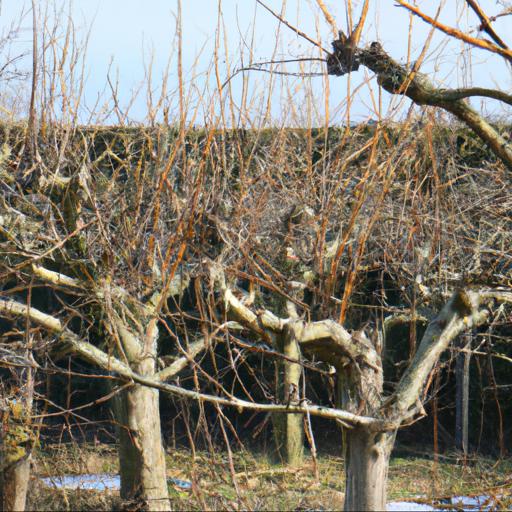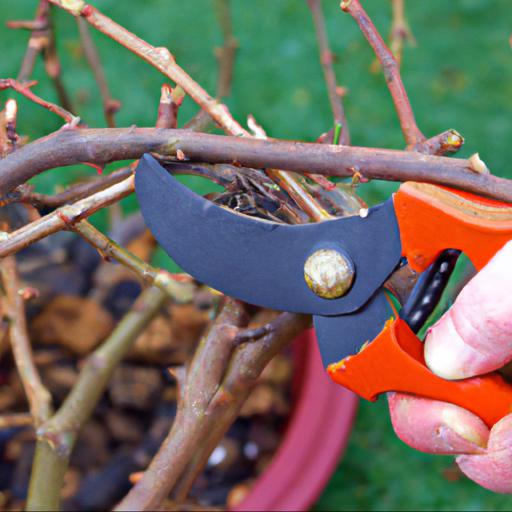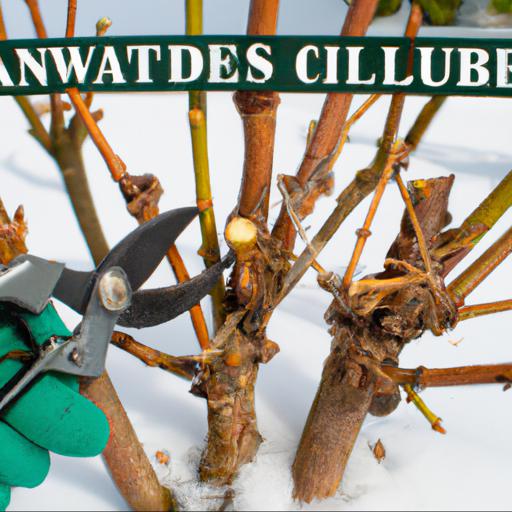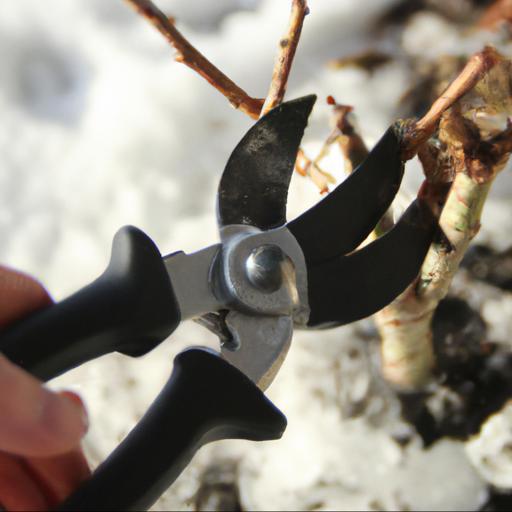Winter pruning is an important part of maintaining the health of your dormant plants. Pruning in the winter can help keep your plants healthy and give them a head start in the spring.
In this blog, we will provide you with some tips on how to properly prune your plants during the winter months. We’ll discuss the best time to prune, the tools you’ll need, and how to properly prune your plants. With these tips, you can ensure that your plants will be looking their best come spring.
Benefits of winter pruning

Winter pruning is a valuable gardening activity because it helps our plants to thrive and remain healthy. Pruning helps to remove dead and damaged branches, as well as dense growth in order to improve air circulation and light penetration.
Trimming away diseased, weak and older branches can also encourage vigorous new growth and blooming, which can add considerable beauty to your landscape. Winter pruning is an important, yet often overlooked activity, because it is traditionally done when plants are dormant. Plants are naturally less active during the winter, making it the perfect season to assess their setting and prune away any dead, unbalanced or crowded branches.
Pruning down the overgrowth during this time of the year not only helps to improve the overall visual aesthetics of your garden, but eliminates the risk of damage to the tree or shrub once the spring season comes around and temperatures are more conducive to growth. With a few simple winter pruning tips, you can ensure that your garden is growing strong and healthy all year round.
Begin by assessing and cleaning your gardening tools to ensure they are in good working order and are free of any diseases that could be spread amongst your plants. Afterward, be sure to plan out how much should be pruned from your plants, as over-pruning can negatively impact the health and growth of your shrubs and trees. Finally, remember to seal pruned areas with paint so that pests, fungi, and bacteria can’t enter and cause harm to the plants.
With a bit of patience and observance, winter pruning will help you to get the most out of your plants and increase their beauty for the coming years.
Tips for pruning dormant plants in winter

As a UK garden expert, I’d like to discuss tips for winter pruning dormant plants. It’s essential to take the time to manage your garden properly if you want your plants to reach their full potential. Winter is the ideal time to prune dormant plants as it’s the dormant season and, generally speaking, the plants are not actively growing.
Pruning at the right time of year will ensure healthier growth and better flower and fruit production in the spring. There are a few things to keep in mind when it comes to pruning dormant plants.
First and foremost, it’s important to prune them at the right time, usually right before spring. Winter pruning is desirable because it encourages vigorous growth and healthier plants in the spring. It’s also a good idea to avoid pruning in the heat of summer, as this could potentially damage your plants.
Additionally, it’s important to use the correct tools when pruning so as not to damage the plants. Make sure you use sharp, clean shears or clippers, and remember to sanitize your tools between pruning sessions to protect your plants from disease.
When you’re ready to prune, make sure to look for signs of new growth, such as swelling buds or foliage around the base of the trunk or stem. Avoid pruning late bloomers or plants that may be flowering in the spring, as you may miss out on the flowers. You should also take note of the location of the branches when pruning and make sure to not remove branches from only one side of the plant.
Finally, make sure to cut branches back to a point just above a bud or another branch, as this will encourage new growth in the coming months. Following these steps will help ensure healthy and vibrant growth in your dormant plants this winter.
Pruning at the right time, using the right tools, and following the tips outlined here will help produce better results in the spring. Always remember to take extra precautions and never prune too much, as that could cause stress on your plants and ultimately inhibit growth. With these tips in mind you can be sure to prune your garden plants successfully this winter and prepare them for healthy growth in the spring.
Common mistakes to avoid when pruning dormant plants in winter

The winter season can be a tricky time for gardeners when it comes to pruning dormant plants in your yard. Winter pruning requires a different approach than summer trimming, and mistakes in pruning during this season can be detrimental to a plant’s health.
As an experienced gardener in the UK, I would like to offer some tips on how to effectively prune dormant plants in the winter while avoiding common mistakes. Firstly, it’s essential that you do not trim severely during the winter. Pruning in the off-season can cause shock to plants, so only remove dead, diseased and damaged stems.
Additionally, avoid pruning too early, as it may cause the plant to wake up from its dormancy before the proper season. Another pruning mistake to avoid is cutting into healthy live wood. When trimming dormant plants, the goal is to thin out the plant rather than shaping it.
Dead or diseased branches are most obvious; however, even healthy branches in the wrong place can interfere with the dormant plant’s natural growth pattern. Finally, make sure to sterilize any gardening tools you use while pruning.
Cleaning gardening tools reduces the likelihood of any bacteria or diseases transferring from one plant to another. It is also wise to make sure that you are pruning according to the plant’s needs. Determine the plant’s size and growth rate prior to pruning so that you can cater to its individual requirements.
All in all, pruning dormant plants correctly in the winter is key to ensuring their health and promoting vigorous growth. To avoid common pruning mistakes, make sure that you only cut into dead or diseased wood, that you prune at an appropriate time, and that your gardening tools are kept sterilized.
With these tips, you can keep your plants looking healthy all year round.
Bottom Line
Winter pruning of dormant plants can be a great way to ensure healthy growth in the coming season. To get the most out of your winter pruning, it’s important to use the right tools, prune at the right time, and know what to look for when evaluating a plant’s structure. With the right knowledge and techniques, you can help your plants thrive for years to come.
FAQ
What are the benefits of winter pruning dormant plants?
The benefits of winter pruning dormant plants include improved air circulation, increased light penetration, and improved overall plant health. Pruning also encourages new growth and can help to shape the plant. Additionally, it can help to reduce the risk of disease and pest infestations.
What are the best tools to use for winter pruning?
The best tools to use for winter pruning are pruning shears, loppers, and saws.
How do you know when to prune dormant plants in winter?
The best time to prune dormant plants in winter is when the temperatures are consistently below freezing and the plants are no longer actively growing.
What are the risks of winter pruning dormant plants?
The risks of winter pruning dormant plants include frost damage, sunscald, and fungal diseases. Pruning too early or too late can also lead to poor growth and dieback. Additionally, pruning can lead to an increase in pests and diseases, as well as an increased risk of winter injury.
How do you protect plants from cold weather during winter pruning?
To protect plants from cold weather during winter pruning, it is important to prune in the late winter or early spring before the coldest temperatures arrive. Additionally, it is important to cover the plants with a protective layer of mulch or burlap to help insulate them from the cold.
What are the best practices for winter pruning dormant plants?
The best practices for winter pruning dormant plants include pruning only when necessary, removing dead or diseased branches, and avoiding pruning late in the season. Additionally, it is important to use sharp pruning tools, make clean cuts, and avoid pruning more than one-third of the plant’s total growth.

